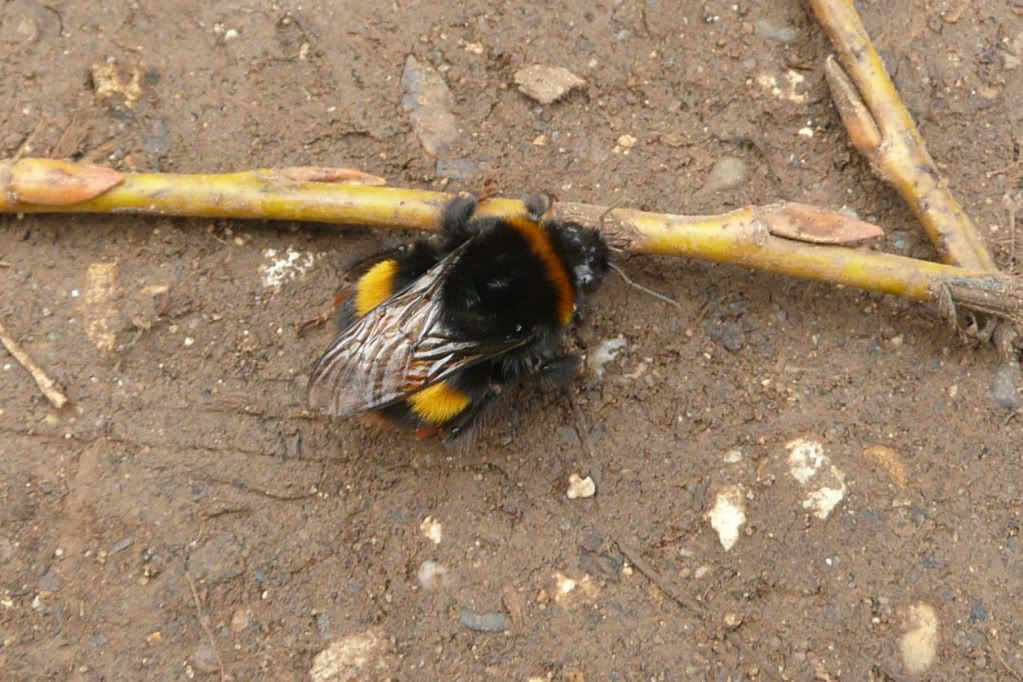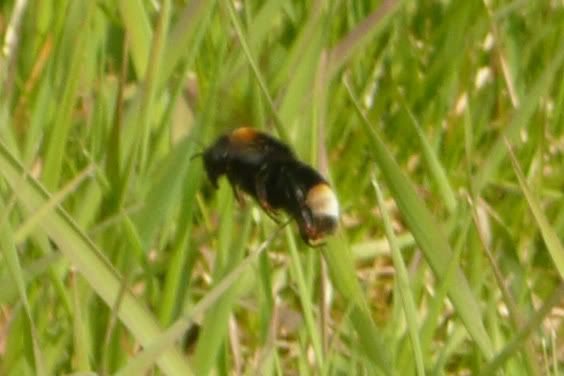Spring is the time of year when queen bumblebees emerge from hibernation, seek suitable nest sites and start a colony. Such as this buff tailed bumblebee I saw earlier in the year.
The colony then produces female worker bees, males and next years queens. Before it descends into chaos and eventually collapses towards the the end of the year.
There are may threats to bumblebees including parasitic wasps, mites and badgers. But one threat comes from another type of bumblebee - the cuckoo. There are six types of cuckoo bumblebee in the UK and this one, seen on the dandelions in the ock meadow, is a southern cuckoo bee:
As can be seen from it's markings, it looks very similar to the buff tailed bumblebee (on whose nests it mainly attacks), the main difference is the lack of a yellow band on it's abdomen and the thin yellow lines above the white tail:
Like its avian namesake, the cuckoo bumblebee takes advantage of the nests of others. It wakes later in the year and feeds off flowers whilst it finds a nest to parasitize. When it finds a nest the queen will hide herself inside, absorbing the smell. When this is complete, she will find and sting to death the existing queen, replacing her and subjugating the workers.
The new queen lays her own eggs, but these will only turn into males and queens who are attended to by worker bees from the deceased queen.
But life for a cuckoo bumblebee can be dangerous. If she selects a nest that is too established it's workers will attack and her. Apparently it's not uncommon to find several cuckoo bee corpses outside a nest.
As Martin says below 'nature can be harsh'.
Thanks to Natasha Rolph of the Bumblebee Conservation Trust for taking the time to answer my questions.



The bee system is just so fascinating, they really have something efficient going on!
ReplyDelete